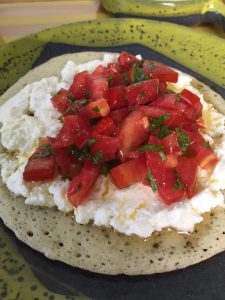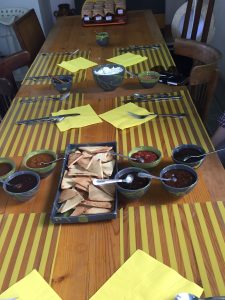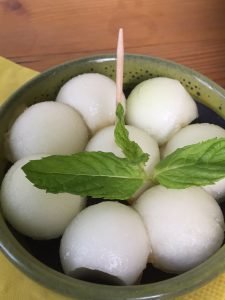A Tunisian/ Maghrebi speciality, the pancake of a thousand holes, is good eating

All photos: Rashmee Roshan Lall
Yesterday, I ate a Tunisian/ Maghrebi speciality, the pancake of a thousand holes. That’s not a speciality for Ras el am el Hejri, the Islamic New Year which Tunisia celebrated on September 21. But the crepe mille-trous is called ghrayef or baghrir and is made of semolina.
From what I can make out, the ghrayef is widely cooked and consumed across the Maghreb a with honey or melted butter, or both.
 We ate the ghrayef at a charming B&B, which also does breakfasts-by-arrangement in the Casbah in Tunis. It’s called La Chambre bleue and is on 24 Rue Agha. Sondos, our charming hostess, told us some of the history of the house. At ground level it dates to the 14th century, and up where we sat, it was from the 19th.
We ate the ghrayef at a charming B&B, which also does breakfasts-by-arrangement in the Casbah in Tunis. It’s called La Chambre bleue and is on 24 Rue Agha. Sondos, our charming hostess, told us some of the history of the house. At ground level it dates to the 14th century, and up where we sat, it was from the 19th.
 Our ghrayef were served with a fresh tomato salad on a bed of ricotta with a drizzle of honey.
Our ghrayef were served with a fresh tomato salad on a bed of ricotta with a drizzle of honey.
The last was the only odd note of a satisfying meal, which included a tea or coffee, a fruit smoothie, melon balls, a small tumbler of natural homemade runny yoghurt, bread, fresh ricotta and seven different kinds of homemade jam – fig, fig de Barbary (prickly pear fruit), pomegranate (grenade), quince, grapefruit, bitter orange and loquat.
At 12 dinar a head (about $5) it was a steal.
Interestingly, what you call your thousand-hole pancake can indicate where in the Maghreb you belong.
Google says it’s called:
** khringo in Orania (northwest of Algeria ) and in the eastern Rif (north-east of Morocco ), where it is also called hatita
** tibouajajin or tighrifine in Kabylia
** korsa in Constantine and Skikda
** ghrayef in eastern Algeria ( Annaba , Jijel , Mila , Skikda and Setif ) and in Tunisia
** thoudfist in the Aures

